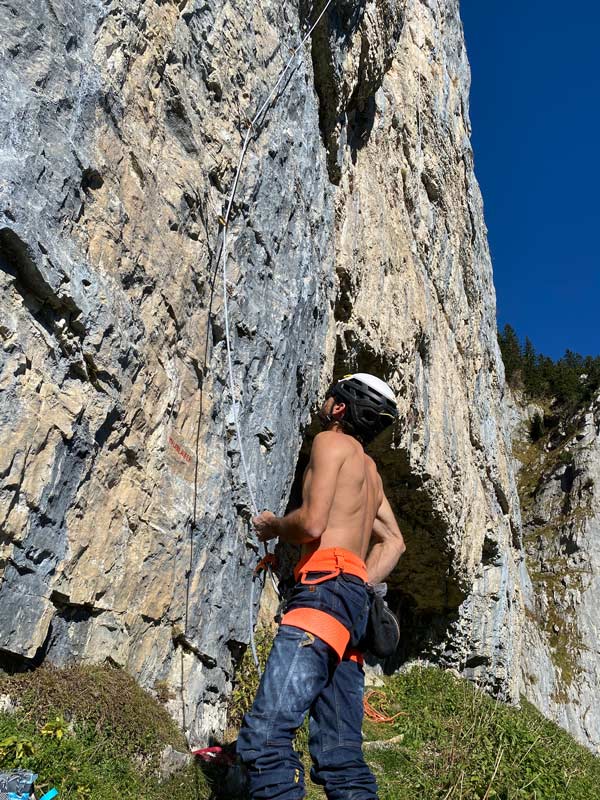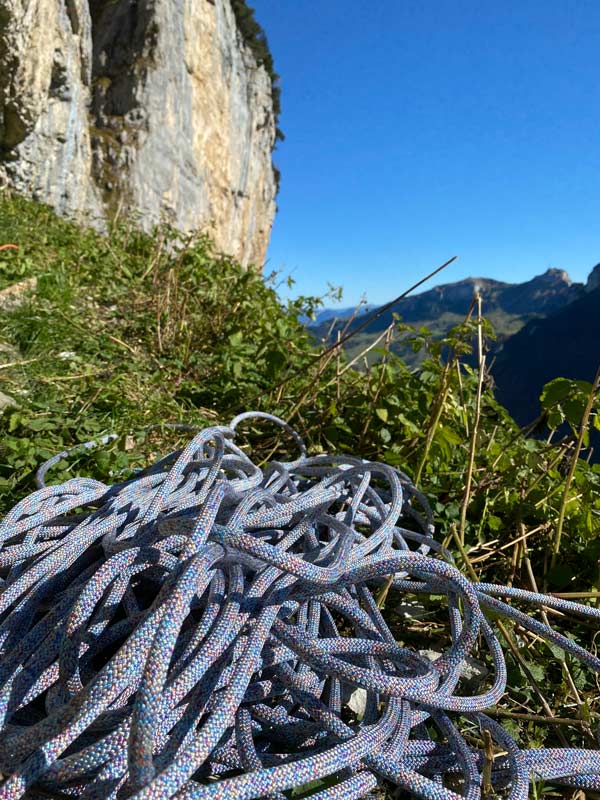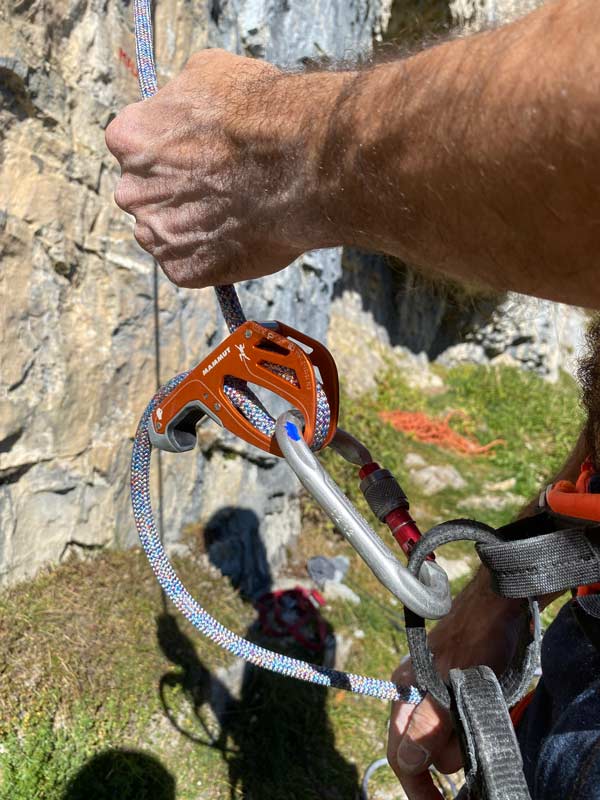We have taken a closer look at the Mammut Crag We Care Classic sport climbing rope and tested it on the rock for you.
Anyone who is regularly out and about in the mountains will sooner or later witness climate change. The increased risk of falling rocks, melting glaciers and capricious weather are evidence that human activity has harmful effects on the climate. For one of the largest manufacturers of mountain sports, Mammut, it is therefore clear that something needs to be done. The outdoor company wants to significantly reduce the ecological footprint of its collections by the end of 2023.
On the way to this goal, Mammut has developed, among other things, a climbing rope that is made from thread scraps that arise when changing from one color to another. The rope has been available under the name We Care Classic since this year. We took a closer look at the recycling rope on the rock and present it here.

Each rope is unique
A few days ago the package arrived at our editorial office with two ropes. And it quickly becomes clear: every rope is unique. Because the “raw material” comes from yarn remnants from classic rope production, the color and pattern can only be influenced to a limited extent. We choose a rope - the other one will be raffled off in the BETA program - and head off to the nearby climbing garden.

When we arrive at the foot of the wall, it doesn't take long to torch, we tie the We Care Classic into the climbing harness and get on the route. When hanging in the rope, the We Care is pleasant to handle and it runs smoothly through the belay device. By the way, we have with that Smart 2.0 and secured to the Grigri. With both devices, the rope could be released quickly without unwanted blocking.
Due to the length of the route, another feature of the We Care Classic is noticeable: It is relatively light for the diameter (59g / m), which means that clipping works even in the upper part of the route without laborious pulling up.

Who is the We Care Classic suitable for?
The We Care Classic is not a rope for intensive project planning (there is that workhorse), another rope that is only suitable for red point attempts at the limit. The We Care Classic is much more aimed at climbers:
- who like to spend an extensive day climbing with as many different routes as possible
- who value sustainably produced climbing products
- who would like to have a unique rope that cannot be used a second time
All in all, the We Care Classic is a cool rope - and due to the recycling background - a sensible thing. We say thumbs up!
Technische Merkmale
- bluesign® certified
- Sheath proportion: 40%
- UIAA falls (1 strand 80 kg): 6–7
- Impact force: 8.8
- Diameter: 9.5mm
- UIAA Dry Test: 46%
- Static elongation single rope: 8%
- Elongation first fall: 33%
- Weight: 59 g / m²


